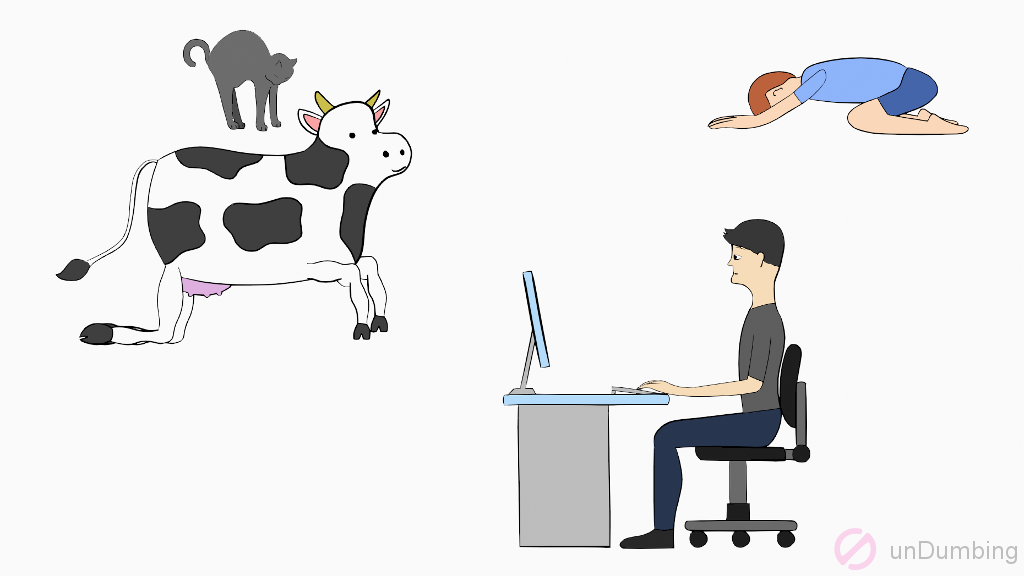Simple Ways to Loosen Up a Stiff Upper Spine

What appears to help ease the tension that I get in the middle of my upper back is a combination of stretching and good sitting posture.
The links below will provide more details on how I managed my issue:
My Story
Back in my 20s when I had upper back stiffness, I would do a stretch that was in Complete Stretching: A New Exercise Program for Health and Vitality. It helped relax my spine, but with the same issue that seems to occur more often now, I wanted to find something easier to use than a paperback.
In addition, I have learned over the years that having an ergonomic workspace set-up is important to prevent arm and back discomfort. However, during the most recent change to a new work area, I did not have a full set-up evaluation. Also, I’ve been slouching more towards the monitor.
With these problems creeping up, I set out to search for some solutions.
Stretching
Starting with the first area, I found three yoga stretches online that were helpful, two of which are videos.
Child’s Pose
The first stretch was in the article, 3 Feels-so-Good Exercises That’ll Decompress Your Spine for a Happy Back, from Well+Good. It described the child’s pose floor exercise where you reach in front, to the left, and to the right of you, while lengthening your spine.
Cat / Cow Stretch
The next exercise was presented in the video from Well With Hels, BEGINNERS YOGA CAT / COW STRETCH | HMFYOGA. Helen Maria Faliveno, a yoga teacher, explained and demonstrated clearly a couple of ways to do the cat / cow stretch.
Cat / Cow Flow Exercise
The last stretch was shared in the video, Yoga – Cat Cow Flow Exercise, where Megan McCliment, a yoga instructor from UC Health Integrative Medicine, showed viewers how to do the cat / cow exercise while sitting on a chair. I found this activity helpful to do after finishing the two floor exercises above, when my spine was more relaxed, so I could get more stretch on my upper spine.
Posture
To address my body position at my work desk, I found Ergonomic Trend’s Creating the Perfect Ergonomic Workspace- The ULTIMATE Guide. It had useful tips and diagrams to help readers set up themselves and their work area. It even had holistic ideas to support a better work experience, including a tool on the website that encouraged eye rest!
After experimenting with my chair set-up, I ended up removing the headrest on my chair, so there’s room for me to sit straight up and move my head, neck, and back throughout the day. As a result, I accumulated less pressure on my upper back by the end of the day.
Lastly, to lower the chances of me leaning towards the computer monitor, I increased the screen’s display size to 125% and found myself leaning on the backrest longer instead.
I can certainly do more to improve the condition of my spine and back. To work towards that, below is a step that I will try:
Continuous Improvement
- Increase my stretching to twice a day. In addition to the afternoon session, I will add a morning one.
Reflecting on how I arrived at the need to increase the flexibility for my upper back, I concluded on the following lessons:
Lessons for Dumber Self
- When symptoms appear, find the fix quickly and maintain the solution.
- Don’t forget to transfer past learnings to new environments.
What will you do now?
Next Step for You
- Learn more about stretching? The article, Stretching: When To Do It, How To Do It, by Michael Curtis, is a great place to start as it gives information based on what your goals are for stretching.
- Work on improving your posture?
- Read another post on this site? (Go to the menu at the top of the page.)
